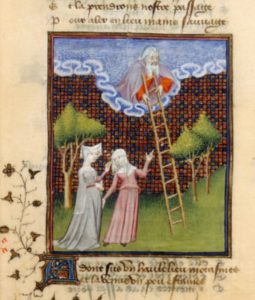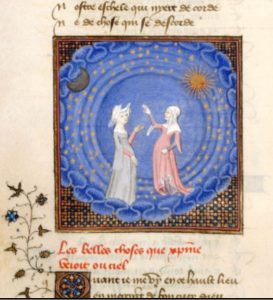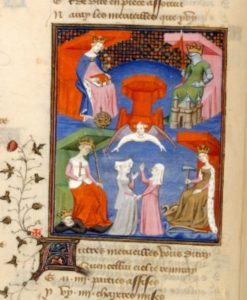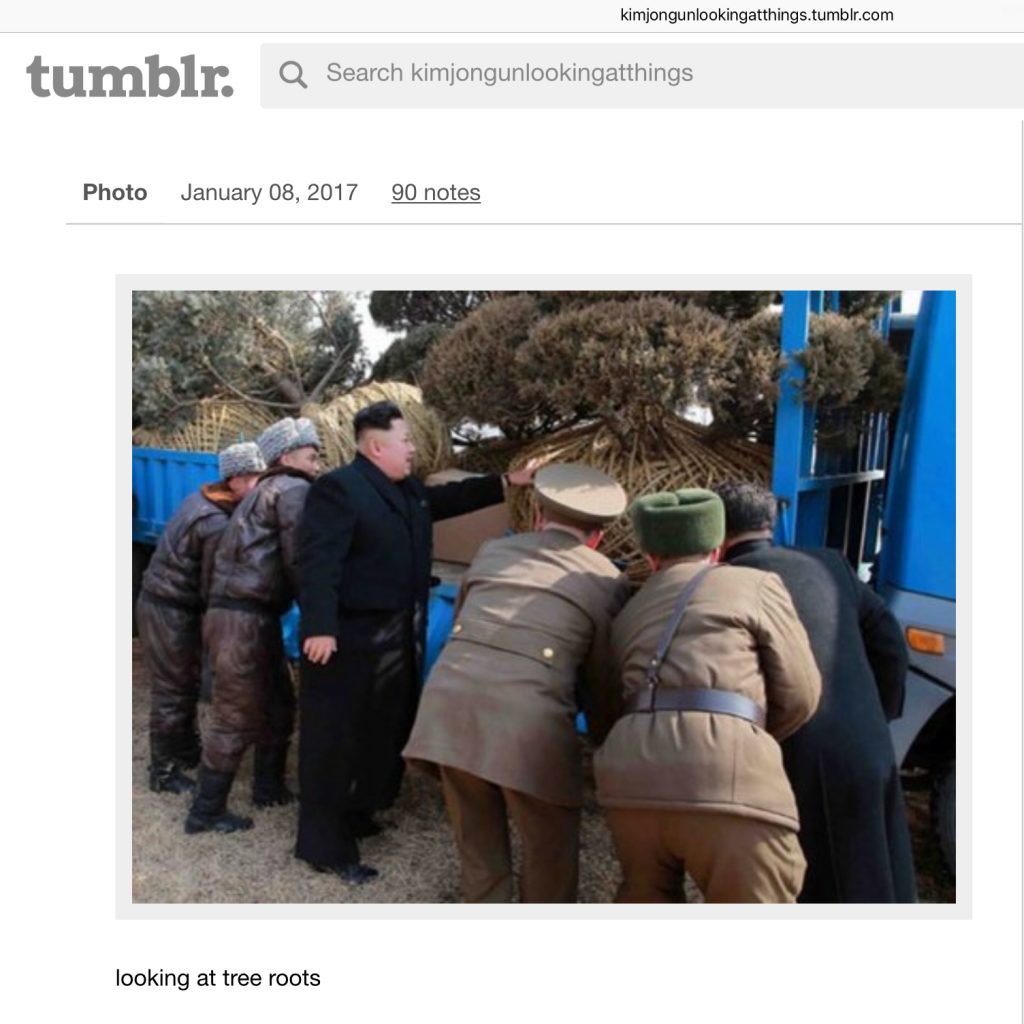Utopias and other alternate/~ive worlds: Christine de Pizan
TUESDAY
Prologue and frame: your questions and comments from last week…
Space and/of/as women – other worlds – possible future other worlds: utopia
1 autobiography, self-writing, spaces for (and against, and excluding) women: moving to France, the court, reading, learning:
- the trope of humility and ignorance: ex. Othea (1400, start: p. 30-31), Path of Long Study (1402-03, prologue: 60-61)
- Fortune’s Transformation (1404: 91-99)
- Vision (1405) and strange bodily image (173-77), Christine’s complaints (fortune vs misfortune) and a personal path of long reading and learning and writing (192-96); compare her complaints (about her own life and the state of the world) in the Path of Long Study (61-66)
2 places for thought:
- reading, Boethius & his Consolation of Philosophy, sibyl-guides, dream-vision and travels (in this world and its wonders, ex. 75-80, and in other worlds, ex. 80-87), and a marvellous garden and fountain of learning (69-74, where a number of great thinkers hang out; an other world outside of time and space as Aristotle, Avicenna, Homer, Orpheus, and others on p. 73 don’t coincide in real life; for some post-medieval analogues, see H.P. Lovecraft and Thomas Ligotti): the Path of Long Study
- the afterlife: Prison of Human Life (1418)
- flight & refuge / imprisonment in an abbey: Joan (1429: 253 stanza 1)
3 building space, creating a new space for oneself, and what happens next:
- public space: Roman de la Rose debate (1401-2)
- City of Ladies (1405): the end (153-5) … and the start of the Treasure / Three Virtues (1405), continuing and maintaining The Work (156-58)
Images above: Christine de Pizan, The Path of Long Study: British Library Harley MS 4431 f. 188r, 189v, & 192v
4 framing our discussions, the other world that was—by serendipitous fortune—on the board during class:
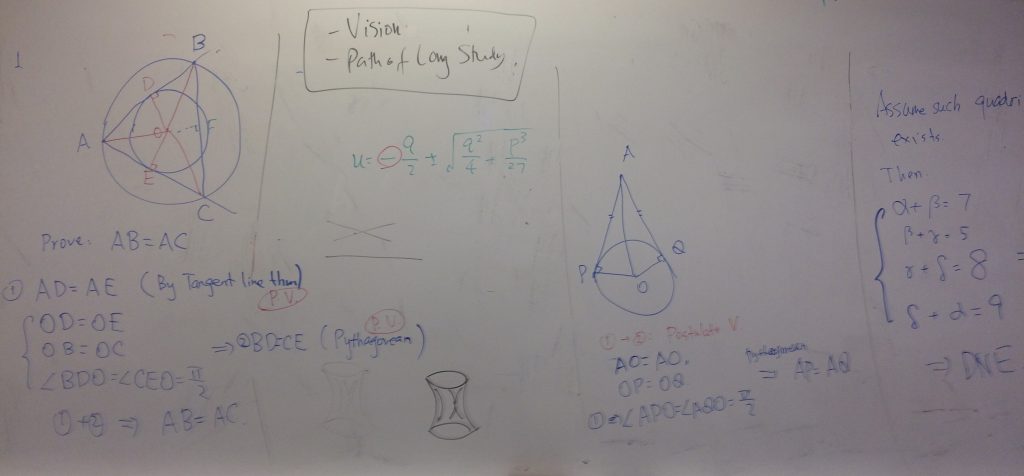
Bonus movie: The Passion of Joan of Arc (dir. Dreyer, 1928); black and white, silent, with intertitles & script based on the original trial transcript—see last week’s comments for a link to it—there are several versions with soundtracks online; here is one set to the music of Arvo Pärt
THURSDAY
Reading:
- Path of Long Study extracts (60-87)
- Vision extracts (173-201)
Images (and the limits of the imaginable): BL Harley 4431 http://www.bl.uk/manuscripts/FullDisplay.aspx?ref=Harley_MS_4431
Possible other worlds: future France
- histories, moral works: allegory, didacticism, virtue, education
- for examples of how allegory works—allegoresis (building it) and exegesis (interpreting it, making sense of it, moving to the aim of understanding)—see Othea (30-41)
- specular works / mirrors of princes / political treatises:
- (1) during her intensive writing period around 1400, with France in decline under Charles VI: Othea (1400), Charles V (1404), Fortune’s Transformation (1404), Three Virtues (1405-06)
- (2) France in crisis: Body Politic (1404-07), Arms (1410), Peace (1412-13)
- (3) after Christine’s 1418 retreat from the world, ending in hope: a new king, Charles VII, and Joan of Arc: Joan (1429)
On commentary, and on the commentary in this class:
1. Textual examples from Christine de Pizan: Othea (30-41).
- Step 1: looking attentively, reading, observing, describing
- Step 2: gloss, explanation, like a first level of footnotes; for example providing further information about a deity, mythological figure, fictional character, place, or other proper noun; may include a second layer (with respect to Step 1 as a first layer) of storytelling
- Step 3: allegory, analysis, interpretation; often (as in the examples here) prescriptive; this is the step at which many paths will be possible, and where the reader / Christine makes choices (aka judgement calls) on which of these paths to follow. Why choose a path and why do this at all: understanding, moral (and political and social) improvement, eventual prescription of a path (or paths) to follow in order to attain individual and collective salvation. Step 3 involves a step up in thinking to a higher level of abstraction, and may involve theorization (be that the application of an existing theory—see Step 4 for an example—or its reworking or the making of a new theory).
- Step 4 (in the Othea cases and some other examples; not an obligatory necessary step in all allegory, explanation, analysis, interpretation, and exegesis; indeed, the appeal to authority is one of the commonest informal fallacies in argumentation…): a “QED” (quod erat demonstrandum, proven, full stop / period) of citing or quoting authoritative judgement / opinion / interpretation. In the examples we saw, the first authority is usually one of the Church Fathers, early writers / commentators on Christianity (the textual corpus and field is called “patristics”): ex. St Jerome. This first authority may be cited or quoted. The second and final authority is Christian holy scripture, quoted directly.
2. Visual example: Christine de Pizan, The Path of Long Study: British Library Harley MS 4431 f. 188r
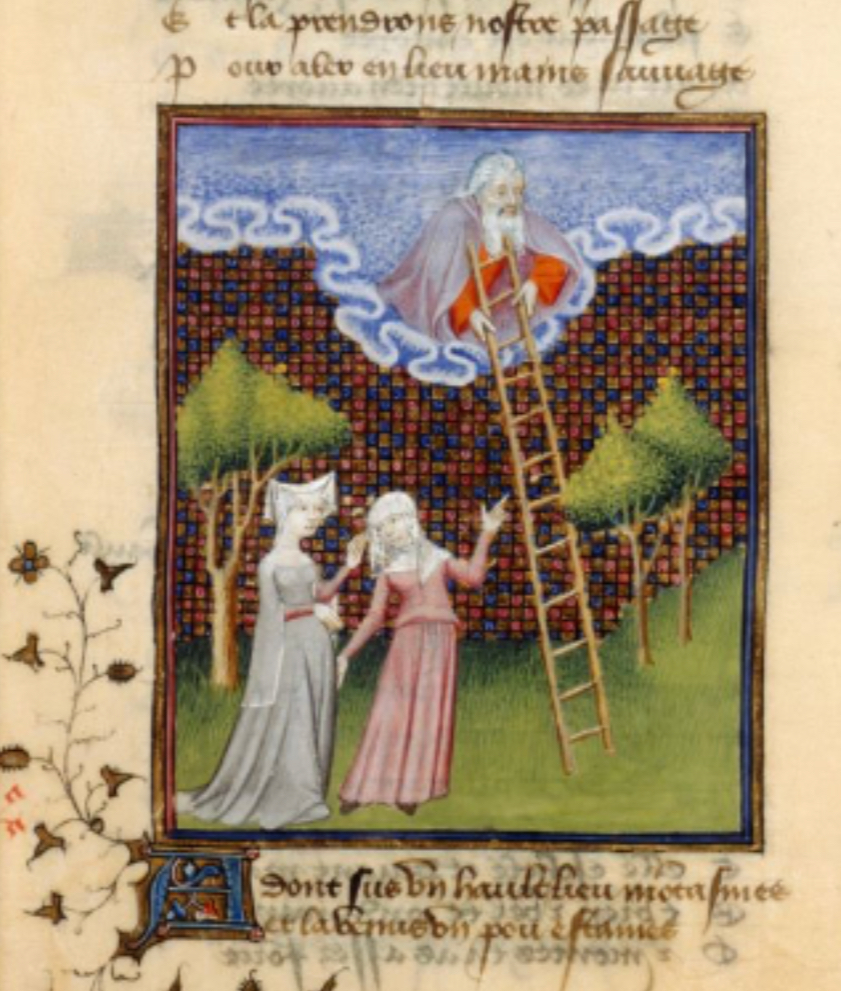
We did several analyses of this one image, bringing in a range of associations: colours and composition and iconography, comparisons with other compositions that were reminiscent, intertextual allusion (ex. Jacob’s ladder), the personal and autobiographical, the imaginatively associative; selecting a point of focus (one or more figures, the background, a colour; or the composisition as a whole); throwing in some modern theoretical approaches, and other anachronisms, and creative (but sensible and intelligent) misreadings; for example using psychological & psychoanalytic interpretations as a contemporary cultural parallel to religion as the Step 4 “QED.”
3. Textual example associated with that visual example: what happens in the Path of Long Study when Christine meets that ladder; and her observation exercises, more dramatically when seeing all the stars and planets afterwards, but also when travelling the earth and when encountering a new person/ification for the first time.
4. A final, non-Medieval, example: Kim Jong-Un Looking At Things…
